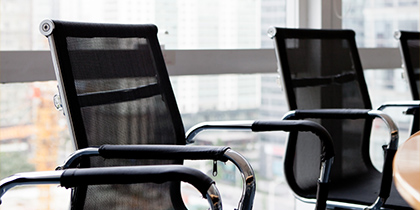Not even a quarter of Dutch and Belgian companies are partially or fully circular, according to research conducted by Milgro together with an independent research firm. Worldwide, the figure is only 6.9%. And that percentage is falling, while the pressure on raw materials is increasing.
Fortunately, our research also shows that companies have the ambition to turn the tide. A third want to take substantial circular steps within five years. That provides enough clues for a dream image as an interesting thought experiment. After all, what does a fully circular world actually look like?
A world with circular buildings
This world consists of circular buildings where families live and people work. These are buildings that are preferably constructed from reused materials-such as wooden beams from demolished buildings-that are repurposed at the end of their useful life. The examples of circular buildings in the Netherlands can be counted on a few hands. Fortunately, there are more and more.
Working circularly
In a circular world, employees work in an office like that of Triodos Bank in Zeist. The striking building, completed in 2019, has an organic form, blends into its natural surroundings, as it were, and is remountable. This means that the elements can be detached and reused for the same purpose. And all materials are included in the Madaster materials passport. Because knowing exactly what materials are present in a building is an important condition for realizing its circular potential. The designer of the office, Thomas Rau, also calls it not a circular building, but a building with circular potential. How circular it actually is depends on how the next generation handles it.
Start with the interior
For companies not yet housed in a completely circular building: start with the interior. That doesn't have to be replaced with new ones at the end of its life, but in many cases can be refurbished, as Milgro has done with worn-out office chairs, as part of the Zero Waste Office approach.
Read also

Zero Waste office: office chairs
And housing
The same applies to housing. Residents in a circular world live in houses or apartments whose building blocks already exist. No new gravel needs to be excavated for the concrete, and no new ore is needed for the steel, either. In Kerkrade, the material from two depreciated 1960s gallery flats has been used for a new residential building on the same site. The floating housing estate in Amsterdam, Schoonschip, is another project founded on circular principles.
Circular food supply
For food supply in a circular world, we can look to initiatives in regenerative agriculture. This form of agriculture, which is on the rise, aims not to deplete the soil, but rather to improve it, as well as its biodiversity. This is done by covering the soil with organic material, alternating cultivation and, of course, not using poisons. Farmers who want to farm this way have united in initiatives such as Lenteland. A soil scientist has already strengthened several arable soils in the Achterhoek by exchanging artificial fertilizers and pesticides for (liquid) compost and leaf fertilizers.
An additional way to feed the soil naturally is worm composting-also called vermicomposting. In a worm hotel, compost worms convert vegetable and fruit scraps into a crumbly compost rich in nutrients. Because this process takes up hardly any space, produces no odor and is locally applicable, it is increasingly used by schools, businesses and municipalities. Also, did you know that there is a worm hotel on Milgro's doorstep?

Transport and transportation
A challenging sector for circular ambitions is the transportation sector. The development of cleaner transport with fewer emissions is accelerating, especially in our country: 35% of all new cars sold are electric. But the batteries of these electric ones are incredibly difficult to recycle, as they are made of scarce raw materials. So circular ambitions in transportation are more likely to be achieved by sharing cars. Or by subscribing to a bicycle.
And our belongings?
We own them as little as possible, of course. We prefer to share or borrow. And all stuff is reused at the end of its useful life. So the phone is refurbished or can be reused, like the Fairphone. Fast fashion is a thing of the past; we wear rented clothes or pass on garments. Or we wear jeans whose cotton has been grown in innovative ways. The take-make-waste mentality can also be halted in business, for example by creating our own sharing marketplaces, as pharmacists have done with PharmaSwap.
How circular is your company?
Milgro takes another step toward a circular world every day, by striving for a world free of waste. We do this by helping our partners process their waste streams sustainably. And by providing smart and circular solutions. For example, Milgro works with an innovative German company for the processing of paper. And also for medical waste, we have found a smart partner who wants to work circularly.
Staying informed
Stay informed about all new developments? Follow us onLinkedIn, listen to the podcast 'Raw material to think about' or subscribe to the newsletter. Are you curious about what Milgro can do for your operations and waste process? Then get in touch.















